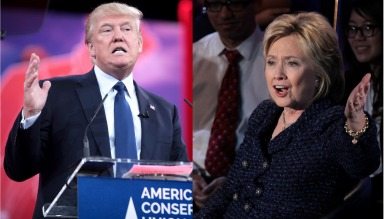Wow, what a US election campaign – how many of us saw that coming? Perhaps a review into the digital marketing campaigns with the 2016 US Election might help us to understand why so many of us were shocked with the results.
Donald Trump said in an interview with CBS’s 60 Minutes that one of the biggest contributing factors to his campaign success was the use of social media. After conducting further research, I learned three key takeaways from Trump’s digital marketing campaign vs Clinton’s which led him to the US presidential campaign victory.
1. Digital vs TV Campaign Budget
What was interesting in this election campaign is how the advertising budget was spent to generate campaign funding for both Clinton and Trump as well as to educate and persuade voters.
I learned that “over the course of the election cycle, Trump’s campaign funnelled $90 million to Parscale’s San Antonio-based [digital marketing] firm, most of which went toward digital advertising”. And Parscale says “more of that ad money went to Facebook than to any other platform.”
Twitter was the free platform he used to communicate with his supporters and non-supporters to gain a competitive edge. He also used this free platform because he wanted freedom of speech and exposure to millions of people globally to voice his perspective, particularly where Trump felt compelled to respond or defend his position to the media and individuals. He used the platform to connect and build a relationship (both positive and negative) with supporters and hopeful new voters. Rather than give pre-planned speeches on this forum, Trump chose to respond directly with the public, engage in conversations despite how controversial his responses or topics were. Trump used free press as a deliberate strategy at a fraction of the cost that assisted him with attendance to his campaign events and votes.
“Facebook and Twitter were the reason we won this thing,” Pascale says. “Twitter for Mr. Trump [campaign]. And Facebook for fundraising.”

In relation to radio and television advertising, Trump’s campaign chose not to reserve much television time in comparison to the Hillary campaign. Clinton spent more than $200 million on television ads in the final months of the election while Trump spent less than half that.
It was clear that Trump wanted to break the tradition of how campaigns spend their advertising funds, he saw less value with spending his advertising dollars on radio and television because he understood social media was more reliable for reaching and influencing his target market including investors and voters throughout the day and evening. On the other hand, radio and television advertising provide good reach during the early mornings or late afternoon and evenings.
2. Test your Digital Marketing Paid Ads!
A/B split testing ads during the digital marketing and social meida campaign was a very effective strategy for serving the ads to Facebook users. At times 40,000 – 170,000 variants of ads was used. Gary Coby, director of advertising at the Republican National Committee, who worked on Trump’s campaign says “Every ad network and platform wants to serve the ad that’s going to get the most engagement”…“The more you’re testing, the more opportunity you have to find the best setup.” The benefits extend beyond serving and reaching a high volume of relevant users but it is also a great way to measure the results and understand important metrics about your target market including demographics and interests. This valuable data is critical to understand where to reinvest your time and money with future marketing campaigns.
3. Meet & Greet is not Dead
Between 1 August and end of September when both parties’ conventions ended, Trump had set records with event attendance at his campaign rallies with an approximate total attendance of 340,000 and thousands were turned away due to space limitations. Hillary on the other hand had only 14,000 in attendance at her rallies.
Despite the importance of the growing digital marketing world and social media, the Trump campaign has taught us that face to face, meet and greet is still a very important and valuable activity to forge and grow new relationships. While using digital is great to maintain relationships with the use of email, social media and video communication, this does not replace valuable trust and rapport building that can occur in the presence of someone, whether that be 1:1 or at an event. To see someone in the flesh, see their communication and behaviour style in their entirety is something digital can never replace.
4. The Influencer’s objective is to Introduce your brand or product or service
The other valuable lesson here is that while influencers (including all celebrities and digital marketing influencers online and offline) are important to endorse your product, your brand or your services, this does not take away the fact we still need to forge a direct relationship with the Influencer’s supporters. Influencers provide a mere introduction, however, the customer, the client, the voter takes on your services or continues to buy your product because you persist with relevant communication, you provide them something of value and you perhaps provide them with hope and a better life with a solution you are offering.
For more information about this blog post, feel free to get in touch with me by emailing me here or visiting Digital Marketing Specialists here www.digitalmarketingspecialists.com.au in Sydney. You may also call (02) 9239 3113.

